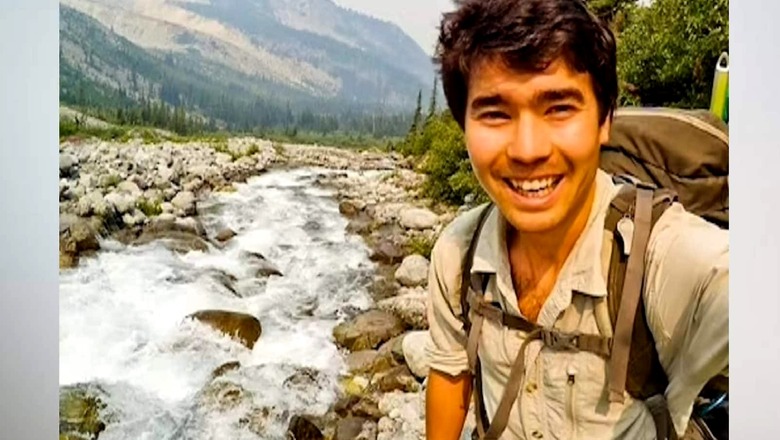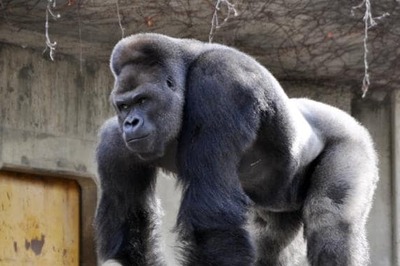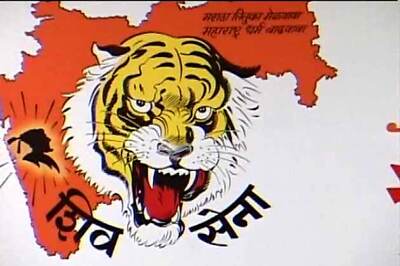Aussie YouTuber's Rare 'Tribe Talk' in Spotlight, A Look At Why Contacting Isolated People is Brutal

views
In, but still quite beyond, the world that we stay in lies a small place in itself of some people who are fighting to make a space of their own with no contact with what’s happening outside their cocoon or with the people beyond their territories.
An Australian blogger, Brodie Moss, posted on his social media his encounter with one such tribe on a “forgotten island” in Vanuatu. The video of his encounter with the tribe went viral on social media, with some comments on the post showing concern over the safety of the blogger on not seeing any new post after that video.
Taking to his official Instagram handle, he shared a video of his meeting with the tribe on November 28. The video was shot at Kwakéa Island which is home to a caucasian man who Moss refers to merely as Brett. He deemed this visit as the ‘most wild experience of his life.’ He uploaded the entire vlog on his YouTube page.
The outside world’s interest with these tribes comes from the curiosity that seems to be a part of human nature over things that are out of our access. People have made several attempts in the past to contact these isolated indigenous tribes, but most of these attempts have ended up being dangerous and involved violence to protect the choice to live as one chooses.
Take a look at encounters of the outside world with some of world’s most threatened tribes:
Before Moving Ahead, Let us First Know Why Should Isolated Tribes be Left Alone?
The argument can be concluded with a simple answer: it is their choice and their right. Isolated tribes are committing no crime by choosing to live away from the outside world.
The choice of isolated tribes to have no interaction with the outside world is driven by the violence and diseases such contacts have brought to their people in the past. Isolated tribes have little or no immunity to the common diseases of the outside world. Such contact with the mainstream can expose people of isolated tribes to deadly pathogens to which they have no immunity,
It is not uncommon for 90% of a tribe to perish following first contact by something that we can even overcome without medicines. Half of Peru’s Nahua people died in a year after they were contacted.
If they are the ones at risk, if they choose to live an isolated life, if establishing contact means their destruction, why should the decision to contact the mainstream society not be theirs and why can we not understand the message when the uncontacted people demonstrate they want to be left alone?
Any infectious disease, even the ones we recover from easily, carried by visitors to areas inhabited by isolated tribes are potentially lethal. Even simple colds can rapidly spread throughout the whole community.
The Nahuas of Peru
The Nahua tribe is among those that live in the Nahua-Nanti Reserve in the Peruvian Amazon, the buffer zone to the Manu National Park, one of the world’s most important protected areas, as per Survivor International report.
Other uncontacted tribes living in the Nahua-Nanti Reserve include Nanti, Matsigenka and Mashco-Piro Indians who depend on the forest for their survival, the report said.
In the 1980s, members of the Nahua tribe were reportedly contacted for the first time after their land was opened up by shell workers searching for oil and gas.Without any immunity to the diseases the outside world carries, the Nahua tribe succumbed to common illnesses with half of the tribe wiped out.
According to a Peruvian Ministry of Health report cited by mongabay.com, the first “stable” encounter of Nahuas with outsiders was in 1984, when four members of the tribe met a group of loggers. The contact “caused the spread of respiratory infections that led to the death of almost half of the population during the first year of contact,” the report stated. Of the 240 Nahua at the time, 114 died.
The Sentinelese
The Sentinel tribe, also known as the Sentinelese, Sentineli and the North Sentinel Islanders, is one of world’s most isolated tribes who inhabit the North Sentinel island in the northern Andaman Islands of India. There are about 100 uncontacted native groups around the world, but none of them are more isolated than the Sentinelese tribe.
To protect them, the government of India in 1956 declared North Sentinel Island a tribal reserve and prohibited travel within 3 nautical miles (5.6 kilometres) of it. The Indian government also maintains constant armed patrol to prevent intrusions by outsiders. Photography is also prohibited. This tribe conscientiously separates itself from the outside world and attempts made by people outside to contact them or go near them have resulted in violence.
John Allen Chau’s Killing
In 2018, an American man identified as John Allen Chau was killed by the Sentinelese tribe, where he went to “preach Christianity”. Chau was killed after the protected Sentinelese tribe shot arrows at him.
Chau reached Andaman and Nicobar Islands on October 16 and later expressed his desire to preach Christianity to the 60,000-year-old tribe. On November 14 2018, Chau was escorted to the island by seven locals of Port Blair, including five fishermen, all of whom have been arrested. While the fishermen decided to stay back, Chau ventured on to the island but was attacked by the tribesmen with arrows.Chau Not the First Person Killed by Sentinelese
John Allen Chau was not the first person to have lost his life after intruding on the Sentinelese island. In 2006, members of the Sentinel tribe killed two poachers who had been illegally fishing in the waters surrounding their island, after their boat drifted ashore, as per Survival International.
Two years before that, in the wake of the ruinous 2004 tsunami in the Indian Ocean, a member of the group was photographed on a beach on the island, firing arrows at a helicopter sent to check on their welfare.
Several frequent attempts were made to establish contact with the island in the 1980s and 1990s, when even gifts were often left for its people.
Waorani
In 1987, a Roman Catholic bishop and a nun met a deadly fate after they decided to establish contact with the Waorani (Huaorani), a group of native Amerindians in Ecuador, with an intent to spread the word of God. Bishop Alejandro Lavaca and Sister Ines Arango were reportedly sacrificed by the tribespeople in a brutal manner, wherein their bodies pinned to the ground by 21 wooden spears and their wounds stuffed with leaves to stop the blood flowing, the Washington Post reported at the time, as per a bigthink.com report.
Most of the Waorani tribe have since been contacted with many being compelled to relocate due to oil exploration on their land, as per Survival International. Occasionally clashes of the group with the nearby Taromenane have been reported. Taromenane are a small section of the Waorani who have continued to remain uncontacted – especially in 2013, when two Waorani tribespeople were murdered by a member of the Taromenane group.
‘Man of the hole’: Amazon Tribe Becomes Extinct as Last Member Dies
The last member of an Amazon tribe uncontacted by civilisation was found dead lying in a hammock on August 23 this year in Tanaru Indigenous Territory of Amazon.
Known to observers as the ‘man of the hole’, he lived alone for more than 25 years on a 30-square-mile patch of protected land and got the name for his practice of digging deep pits to hunt animals or hide in.
Little is known about his tribe besides that it was left counting down to extinction after attacks by local farmers from the 1970s left a sole surviving member, one who rejected contact with outsiders.
His life was marked by massacres that left him as the lone survivor of a small tribe attacked by gunmen apparently hired by ranchers seeking to exploit the pristine Amazon.
When authorities found the man they found no signs of violence and believe he died of natural causes. The man was covered in the bright feathers of a bird called the guacamaya, a kind of macaw, local news reports said.
Awa Tribe in Amazon Forest
Dubbed as the world’s most endangered and threatened tribe, the Awa tribe, as per reports on the internet, have 350 members with 100 of them having no contact whatsoever with the outside world. The tribe lives in the Amazon forest covering Brazil’s border with Peru, according to an in-depth National Geographic report this year.
They live with “near constant” threats from illegal logging and wildfires, the National Geographic report found, inspiring another tribe — the Guajajara — to rise up to protect them as “Forest Guardians.”
Those Awá still living uncontacted in the forest hunt with 2 metre (6 foot) long bows. Arrows fly high and silent into the forest canopy, allowing several shots before game is alerted to the hunters’ presence.
Read all the Latest News here




















Comments
0 comment